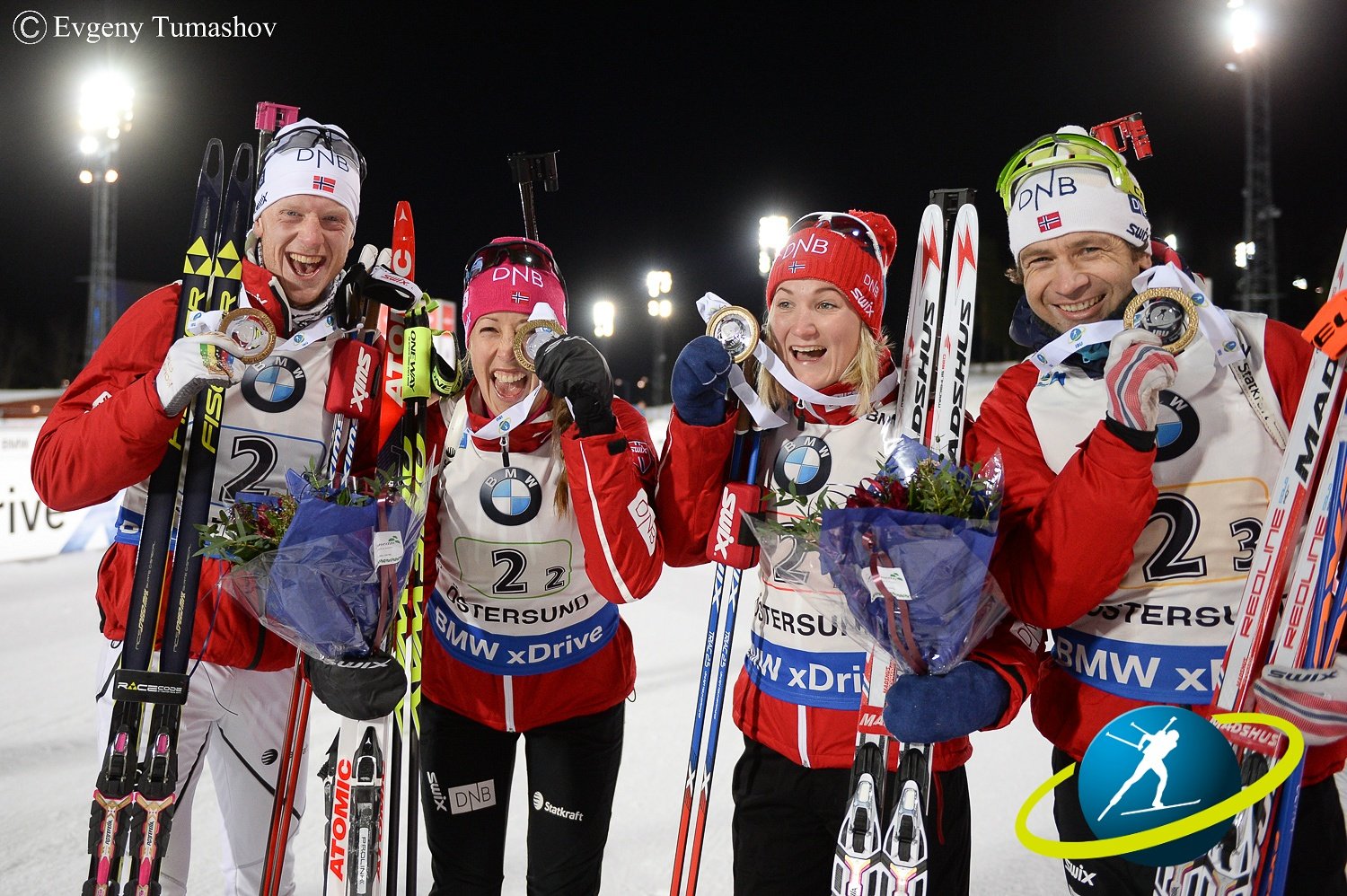
It’s a new season on the International Biathlon Union (IBU) World Cup, but the Norwegian biathlon team made it clear that they didn’t want anything to change: just as they won the World Cup mixed relay trophy in 2016, they picked up a 33.7-second win in the event in Östersund, Sweden, on Sunday to kick off the new year.
And just as he had so many times before, it was Ole Einar Bjørndalen — the “King of Biathlon” — who provided one of the crucial contributions for the Norway team, bringing them a lead that his teammates would never relinquish.
The Norwegians were one of just three relay teams all afternoon to avoid the penalty loop, but things didn’t start out so auspiciously. Marte Olsbu used a spare round in the first prone stage, dropping to eighth.
But despite missing again in standing, she left the range in first place, then held on to the lead almost to the exchange, where she tagged off 0.1 seconds behind Susan Dunklee of the U.S.
Twenty-one-year-old Anna Magnusson of Sweden was also in the lead pack, tagging off 0.6 seconds back and making for a tough fight on the last loop.
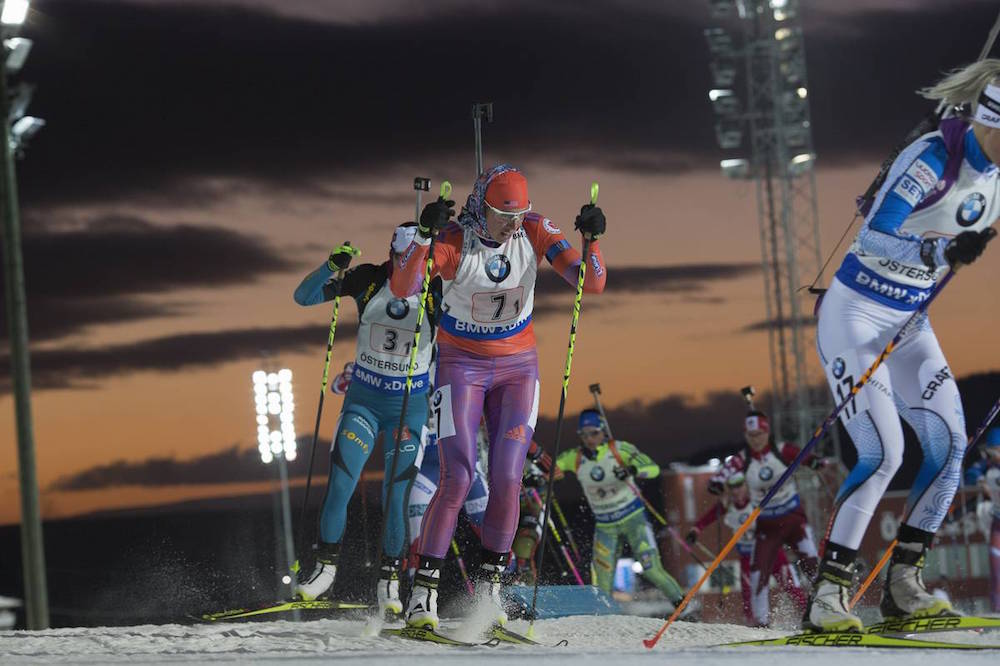
“I was really impressed with Sweden being right up there on the first loop, too,” said Dunklee, who had a similar battle with Olsbu in the mixed relay at 2016 IBU World Championships. “The three of us were just duking it out that whole last loop. I flooded my system a little early with lactic acid on one of the early hills… but then I came back and caught them towards the end of that lap and we all came in together. Yeah, it was fun!”
Norway’s second athlete, Fanny Horn Birkeland, held the lead for several kilometers, but was one of many women felled by the wind in the second-leg standing stage. Birkeland used all three spare rounds to knock down her targets, and yet only fell 9.3 seconds out of the lead; at this point all but one team in the field had used at least four spare rounds, and some had used many more.
Birkeland wasn’t thrilled with her shooting, but knew it was good enough to get the job done.
“It was an acceptable leg,” she told Norway’s NRK broadcaster.
Clare Egan was another casualty of the wind. The American had taken the tag from Dunklee in first place, and maintained a sixth-place position close to the leaders at the halfway point of her race. But with two penalty laps in standing, she dropped to 13th, 1:39.9 from the lead.
“Clare had a fantastic first half of her race,” Dunklee said. “I was really impressed that she stayed with the pack in the prone, and shot clean under that pressure. I think the pieces are there and they’ll come together later in the season for us as a team.”
By the next tag, Italay’s Dorothea Wierer had put together a small 4.9-second lead over Birkeland. Lukas Hofer, the first man out of the exchange zone, had a near-perfect start for Italy, extending his lead over the first loop and then using one spare round to clean his targets, finishing his shots before anyone else had even begun shooting.
But Norway’s Bjørndalen was steadily chasing, and on the second loop began to close ground. By the time the two came into the range for standing, it was a close race and Bjørndalen showed that despite being 42 years old, he still has the instincts and strength that have earned him well over 90 World Cup wins.
Hofer and Bjørndalen traded shots, cleaning one target after another, and Hofer began to leave his mat before realizing that his last target hadn’t actually fallen. Bjørndalen hit five for five and left with the lead, but Hofer had to use all three spare rounds to knock down that one target.
“I felt really good all the first four shots, and I was so sure I cleaned the last one, I was about to put the rifle back on,” Hofer lamented in the post-race press conference.
In the meantime, Benedikt Doll of Germany finished his shots and headed out on course in second place, 25.4 seconds behind Norway.
“There was a tricky wind today, which was noticeable in the standing shooting,” Bjørndalen said in a television interview with NRK. “For my part it went all right today. It ‘worked out’ and I was able to do what I was supposed to do.”
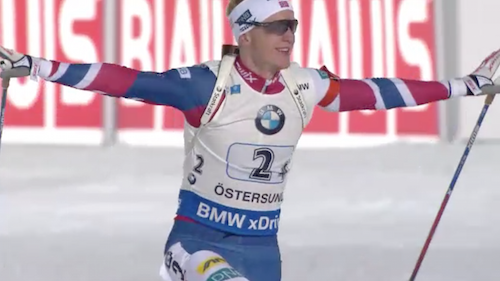
Bjørndalen tagged off to Johannes Thingnes Bø, who cruised around his first loop and then missed his last target in prone. He easily cleaned it with a single spare round, however, and was back on his way.
In standing, Bø put on a clinic and had one of the fastest range times of the day while cleaning all five targets.
“The last leg is very hard, and I haven’t done it so many times,” Bø said in a press conference. “When I was starting alone the pressure was off, and I wanted to do my own race. I tried to gain some seconds from the very start.”
Arnd Peiffer likewise held Germany in second, using one spare round in prone and none in standing.
“I was pretty much alone the whole time, but I received pretty good information from the coaches, so I could find a good speed,” he said in an interview with Germany’s ZDF broadcaster. “In prone I was a bit hectic, also because it wasn’t so easy today, the wind was changing back and forth. Already during the zeroing [target practice] I had a few problems. So I was a bit insecure and unfortunately shot the last one away, but was able to hit the first spare. Overall I think it worked out pretty well today.”
So just like Norway, the German team had stayed out of the penalty loop and used just six spare rounds total.
“I have to say they worked really well at the range today,” German men’s coach Mark Kirchner told ZDF. “It was not so easy, with changing winds you had to be wide awake. You can’t complain if you need just one spare each.”
The most exciting finish of the day was the race for third place between Russia – a team which had bounced between fifth and seventh for much of the race – and Italy. Anton Shipulin pulled the Russians from seventh into fifth and then into third with two perfect shooting stages and the fastest ski time of all anchor leg skiers.
But Dominik Windisch of Italy was eager to make up for his teammate Hofer’s shooting collapse and after leaving the range just a few seconds behind Shipulin after standing, managed to catch up and stick on him like glue. Windisch looked labored as the two flew around the course, but he knew that the venue has a downhill finish.
Windisch shadowed Shipulin down the hill, then used a slingshot of momentum to fly past into the finishing straight and outsprint the Russian to secure third place for Italy, +44.2.
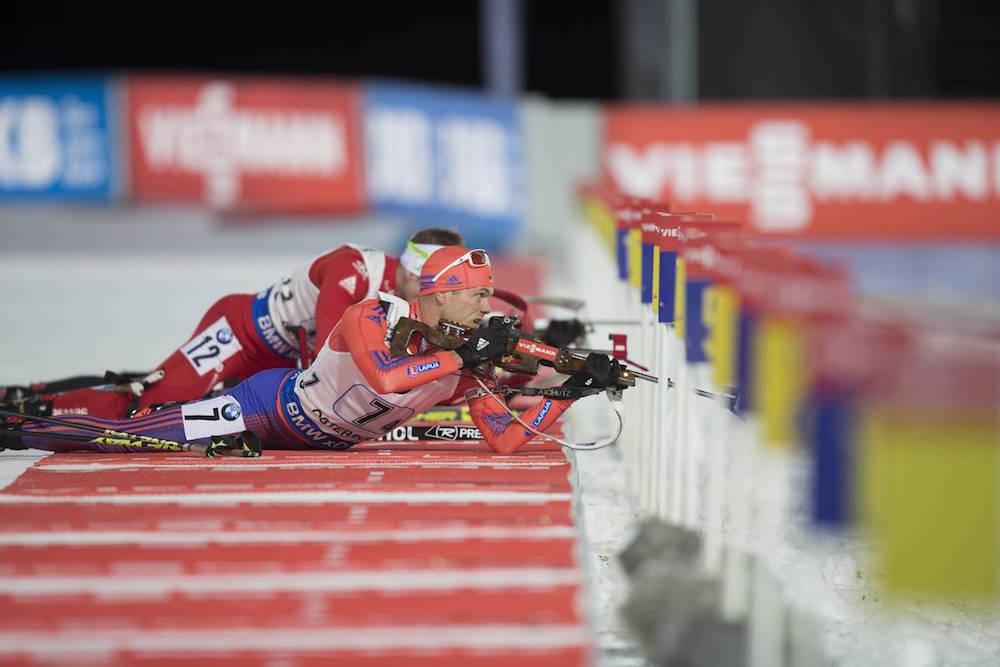
As for the U.S., Egan had already moved from 13th up to 12th by the time she tagged to Lowell Bailey, who brought the team into 10th. Tim Burke then brought them up into eighth place, despite three spare rounds.
“I was happy with my shooting from the clip in standing but disappointed that I needed three extras to get the last [standing] targets,” Burke wrote in an email. “I tried to push the pace on the first two spares and just missed with both. On the third extra round, I really took my time to make sure I hit because I knew there was no one to catch in front and that I would lose a few places if I missed… I just need to be a bit more relaxed with the extras in the future.”
Burke had the fourth-fastest course time of the anchor-leg athletes, and said that while he “did not feel at my absolute best”, his ski speed was where he wanted it to be at this early point in the season.
“It certainly was not our best race or perfect race, but a good sign that we can fight for the podium later in the season if we all have an ‘on’ day,” Dunklee said. “So that’s exciting to know.”
“Going into the race I know we all hoped for a better result,” Burke agreed. “[But] in years past, we could have been 15th place with this shooting, so we are encouraged by that improvement and we know more is possible in the future.”
The Canadian team was never really in the picture after leadoff athlete Julia Ransom skied two penalty loops in the opening standing stage. Megan Tandy and Scott Gow had shooting troubles of their own, and the team was sitting in 22nd place with those two penalty loops and 11 spare rounds before being lapped and pulled from the race.
– Harald Zimmer, Aleks Tangen and Ian Tovell contributed
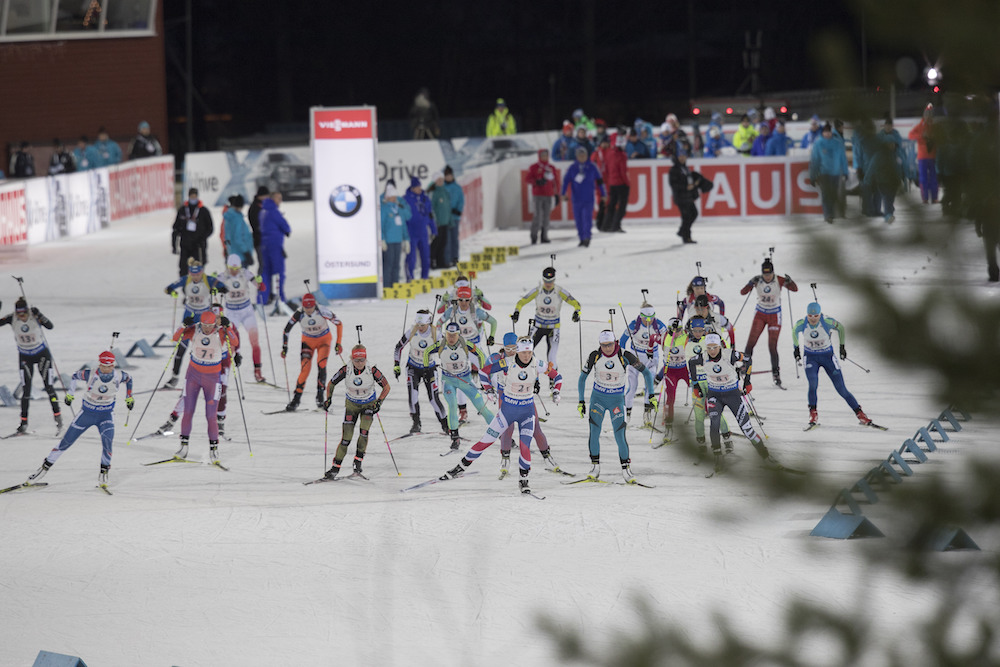
Chelsea Little
Chelsea Little is FasterSkier's Editor-At-Large. A former racer at Ford Sayre, Dartmouth College and the Craftsbury Green Racing Project, she is a PhD candidate in aquatic ecology in the @Altermatt_lab at Eawag, the Swiss Federal Institute of Aquatic Science and Technology in Zurich, Switzerland. You can follow her on twitter @ChelskiLittle.



